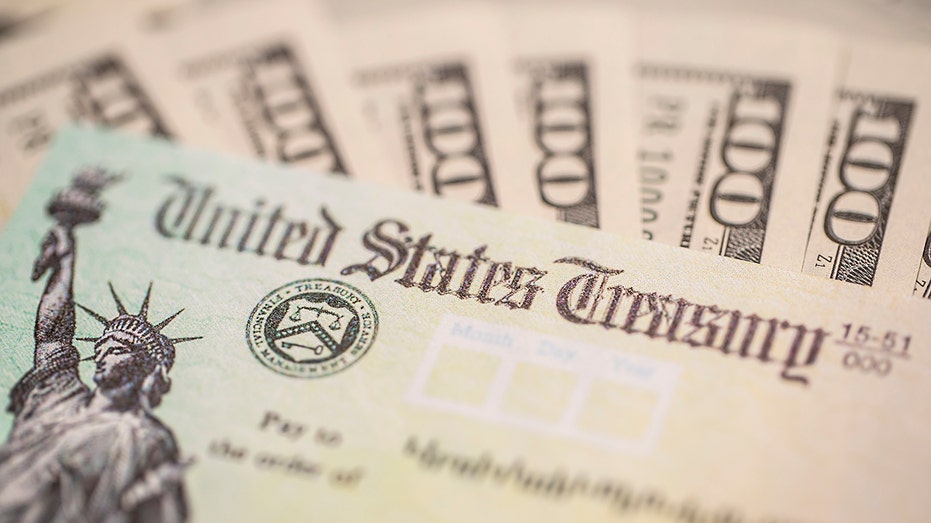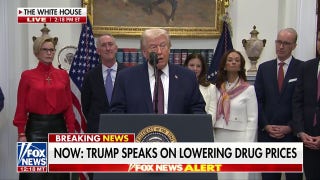Federal deficit up $200 billion compared to last year despite Biden's reduction claims
Higher spending and lower tax receipts caused deficit to widen
Paul: Chronic deficits are eroding us from within
Sen. Rand Paul, R-Ky., reacts to claims the GOP will cut Social Security and Medicare on "Kudlow."
New data from the nonpartisan Congressional Budget Office (CBO) shows the federal budget deficit has increased by $200 billion in fiscal year 2023 so far compared to a year ago, undercutting claims made by President Joe Biden about deficit reduction during his administration.
The CBO's monthly budget review was released Wednesday and noted that in the first four months of FY2023, which began on Oct. 1, 2022, the federal deficit was $459 billion – up by $200 billion compared to the $259 billion deficit reported in the same October-January period in FY2022. Federal revenue was $43 billion lower in the first four months of FY2023 compared to the prior year, primarily due to lower income tax receipts and fewer remittances of profits from the Federal Reserve banks as short-term interest rates have risen, while spending was up by $157 billion in the same period.
In Biden's State of the Union address Tuesday, he claimed, "In the last two years, my administration has cut the deficit by more than $1.7 trillion – the largest deficit reduction in American history." However, Biden's deficit reduction claims omitted the impact of expiring COVID-19 pandemic relief measures in achieving that reduction.
BIDEN ON PACE FOR $1 TRILLION BUDGET DEFICIT IN 2023: $2.7 BILLION IN NEW DEBT PER DAY

President Joe Biden delivers a speech during the state dinner hosted by South Korean President Yoon Suk Yeol at the National Museum of Korea, in Seoul, South Korea, May 21, 2022. (AP Photo / Lee Jin-man / Pool / AP Newsroom)
The U.S. ran a record-setting deficit of more than $3.1 trillion in FY2020 after Congress approved trillions of dollars of new spending on temporary COVID-19 programs on a bipartisan basis, including those under the CARES Act in the early weeks of the pandemic-induced lockdowns.
Many of those programs continued into the following year when Biden took office and Democrats used their majorities in Congress to enact the $1.9 trillion American Rescue Plan Act along party lines. Those factors combined to keep the FY2021 deficit over $2.7 trillion.
CBO OFFERS CONGRESS OPTIONS FOR SAVING SOCIAL SECURITY, MEDICARE, HIGHWAY TRUST FUND FROM INSOLVENCY

Nancy Pelosi and Chuck Schumer hold a press conference on gas prices, April 28, 2022. Democrats and President Biden enacted the $1.9 trillion American Rescue Plan Act in early 2021. (Chip Somodevilla / Getty Images / Getty Images)
The deficit narrowed further to nearly $1.4 trillion in FY2022 as more pandemic spending came to an end, although that was still the fourth-largest annual deficit in U.S. history.
The FY2023 deficit will depend on federal spending and tax receipts over the next eight months but is projected to be around $1 trillion, which would be America's eighth annual deficit of at least $1 trillion – all of which have occurred since FY2009.
BIPARTISAN TRUST ACT AIMS TO SHORE UP SOCIAL SECURITY, MEDICARE, HIGHWAY TRUST FUNDS

Federal spending spiked during the COVID-19 pandemic, pushing the deficit above $3 trillion for the first time ever. (iStock / iStock)
Later in his State of the Union address, Biden added that his upcoming budget submission will propose further deficit reduction: "I can tell you, the plan I'm going to show you is going to cut the deficit by another $2 trillion."
Just a day before making those claims in the State of the Union, Biden missed the deadline for submitting the presidential budget request, which is required to be released no later than the first Monday in February under the Congressional Budget Act of 1974.
GET FOX BUSINESS ON THE GO BY CLICKING HERE
That makes it three consecutive years in which Biden missed the deadline for providing Congress with a budget blueprint.
However, presidential budget requests are typically exercises in signaling political priorities rather than documents that are broadly incorporated into lawmakers' budgeting and spending plans.




















